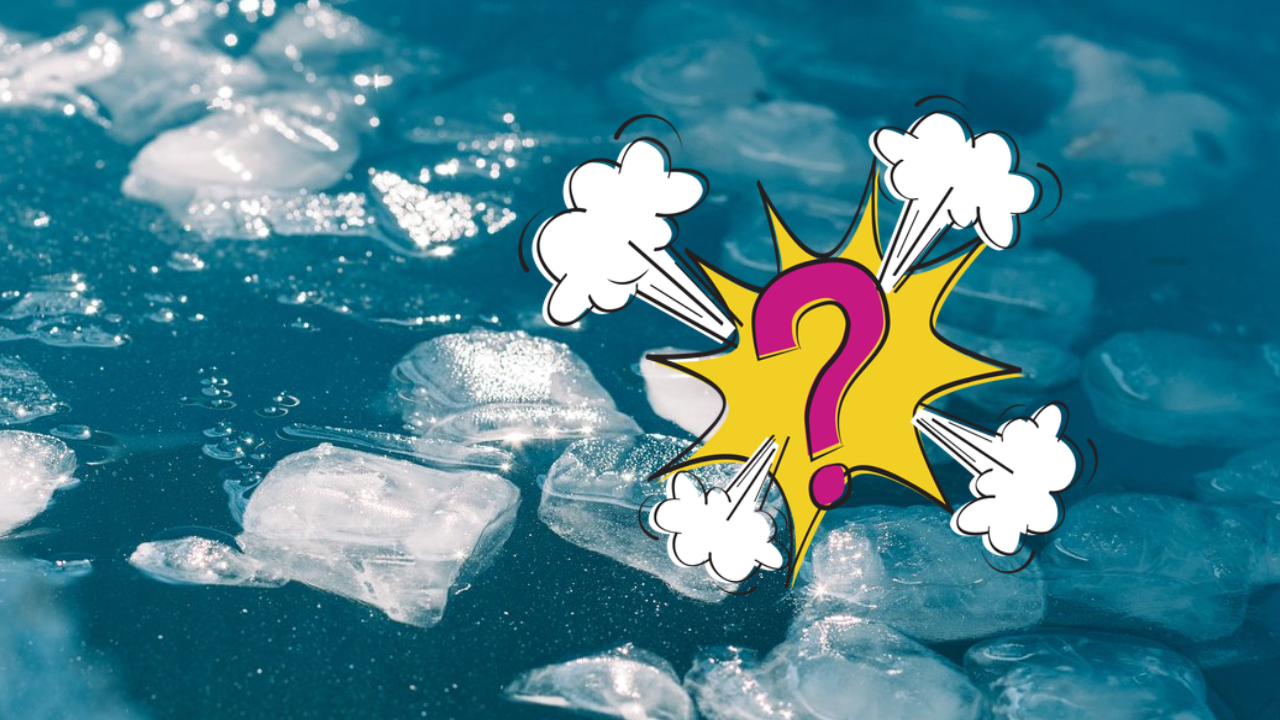Ice baths, also known as cold-water immersion, have become a go-to recovery method for athletes and fitness enthusiasts. Whether you’re a seasoned professional or someone who works out regularly, you’ve likely heard of the supposed benefits of stepping into an ice bath after an intense training session. But how effective are ice baths, and why should they be considered an essential part of post-workout recovery?
The science behind ice baths, explore their potential benefits, and provide insight into how you can incorporate them into your workout routine. We’ll also examine whether ice baths are suitable for everyone, and what the alternatives are for those who might not want to take the plunge into freezing water.
Table of Contents
What is an Ice Bath?
An ice bath typically involves submerging the body in cold water—usually between 50°F to 59°F (10°C to 15°C)—for a period of 10 to 15 minutes. Some athletes go even colder, adding ice cubes into the bath to drop the temperature further. The idea is that the cold water helps to constrict blood vessels, reduce swelling, and flush waste products, like lactic acid, out of the muscles. This form of recovery has been practiced for years, particularly among elite athletes, and is believed to offer both physical and mental benefits.

The Science Behind Ice Baths
The main appeal of ice baths is their potential to reduce muscle soreness and inflammation. When you exercise, especially during high-intensity workouts, tiny tears develop in your muscle fibers. This damage triggers an inflammatory response as your body works to repair itself. Inflammation is a natural part of the recovery process, but too much of it can lead to delayed onset muscle soreness (DOMS), which can impede your next workout.
Here’s where ice baths come in: the cold water causes your blood vessels to constrict (vasoconstriction). This process helps to decrease the flow of blood to the affected areas, which can limit the extent of inflammation. When you get out of the bath and your body warms up, your blood vessels dilate (vasodilation), helping to pump fresh oxygenated blood to the muscles and accelerate the healing process.
There is also a theory that cold immersion can help reduce the buildup of waste products like lactic acid, which accumulates during exercise and contributes to muscle soreness. Additionally, the cold water can numb the muscles, providing temporary relief from pain.
Benefits of Ice Baths

1. Reduction in Muscle Soreness
One of the most cited benefits of ice baths is their ability to reduce post-exercise muscle soreness, particularly DOMS. DOMS typically sets in 24 to 72 hours after strenuous exercise and can limit your ability to perform daily activities, let alone continue your training routine. Ice baths help by mitigating inflammation, reducing the severity and duration of DOMS.
For athletes who need to train multiple times a day or compete in back-to-back events, ice baths can be a game-changer. By speeding up recovery, they allow for more frequent and higher-quality training sessions.
2. Enhanced Circulation and Flushing Out Toxins
As mentioned earlier, cold exposure causes vasoconstriction, followed by vasodilation once you exit the bath. This process of constricting and dilating blood vessels helps flush out metabolic waste products such as lactic acid, which builds up during intense physical activity. Better circulation means that nutrients and oxygen are delivered to the muscles more efficiently, promoting faster recovery.
3. Inflammation Control
Inflammation is the body’s natural response to injury or stress, but prolonged or excessive inflammation can delay recovery. Ice baths help control this by reducing the swelling and inflammation that occurs after a workout. This is particularly beneficial for people who engage in high-impact activities like running or weightlifting, where joints and muscles undergo significant stress.
4. Mental Toughness and Recovery
There is a psychological element to ice baths that shouldn’t be overlooked. Stepping into freezing water requires a certain level of mental resilience. Many athletes believe that the mental toughness developed through enduring ice baths translates into their performance on the field or in competition. Additionally, cold-water immersion can have a calming effect on the nervous system, reducing overall stress levels and promoting relaxation. For athletes, learning how to mentally cope with discomfort can be just as valuable as the physical benefits.
5. Improved Sleep Quality
Although research is limited, some studies suggest that cold exposure before bed can improve sleep quality. After an intense workout, your body temperature can remain elevated for hours, which may make it harder to fall asleep. An ice bath can help lower your core body temperature and promote relaxation, potentially leading to better rest and recovery.
Who Can Benefit From Ice Baths?

While ice baths are most commonly associated with elite athletes, they can be beneficial for anyone engaging in intense physical activity. Endurance athletes, such as marathon runners, cyclists, and triathletes, often use ice baths to recover from long-distance training sessions. Strength and power athletes, including football players, weightlifters, and rugby players, can also benefit from the reduction in muscle soreness and inflammation.
However, even recreational gym-goers or individuals participating in group fitness classes may find relief from an ice bath after particularly grueling workouts. The key is to listen to your body—if you’re experiencing significant soreness or swelling, an ice bath might be a useful recovery tool.
Ice baths aren’t for everyone, and it’s important to understand that they aren’t a one-size-fits-all solution. Some people may experience negative side effects from the cold exposure, such as shivering, increased heart rate, or even hypothermia if the water is too cold or the exposure is too prolonged.
Additionally, there is ongoing debate within the scientific community about the overall efficacy of ice baths. Some studies suggest that while they may help reduce soreness, they may also inhibit the body’s natural muscle repair process by dampening the inflammatory response too much. This can be counterproductive for athletes whose goals include building muscle or increasing strength.
Alternatives to Ice Baths
If the idea of submerging yourself in freezing water isn’t appealing, there are several alternative methods for post-workout recovery:
- Active Recovery: Low-intensity activities like walking, cycling, or swimming help to promote blood flow to the muscles without adding additional stress. Active recovery can help flush out waste products and speed up the recovery process.
- Compression Therapy: Compression garments, like sleeves or socks, can help reduce swelling and improve circulation, offering a more comfortable alternative to ice baths.
- Foam Rolling: Using a foam roller to massage sore muscles can help release tightness and improve blood flow, facilitating faster recovery.
- Stretching and Mobility Work: Incorporating post-workout stretching and mobility exercises can help maintain flexibility and reduce stiffness.
- Contrast Baths: Alternating between hot and cold water can provide some of the benefits of an ice bath while being a little less jarring. This method, known as contrast therapy, can improve circulation and reduce muscle stiffness.
How to Safely Take an Ice Bath
If you decide to incorporate ice baths into your recovery routine, there are a few guidelines you should follow to ensure safety:
- Temperature: Keep the water between 50°F and 59°F (10°C to 15°C). If it’s too cold, you could risk frostbite or hypothermia.
- Time Limit: Limit your time in the ice bath to 10 to 15 minutes. Extended exposure to cold water can be harmful.
- Gradual Exposure: If you’re new to ice baths, start with shorter exposure times and gradually increase as your tolerance improves.
- Warm-Up Afterwards: After exiting the ice bath, be sure to warm up gradually. Throw on some warm clothing and move around to get your blood circulating.
